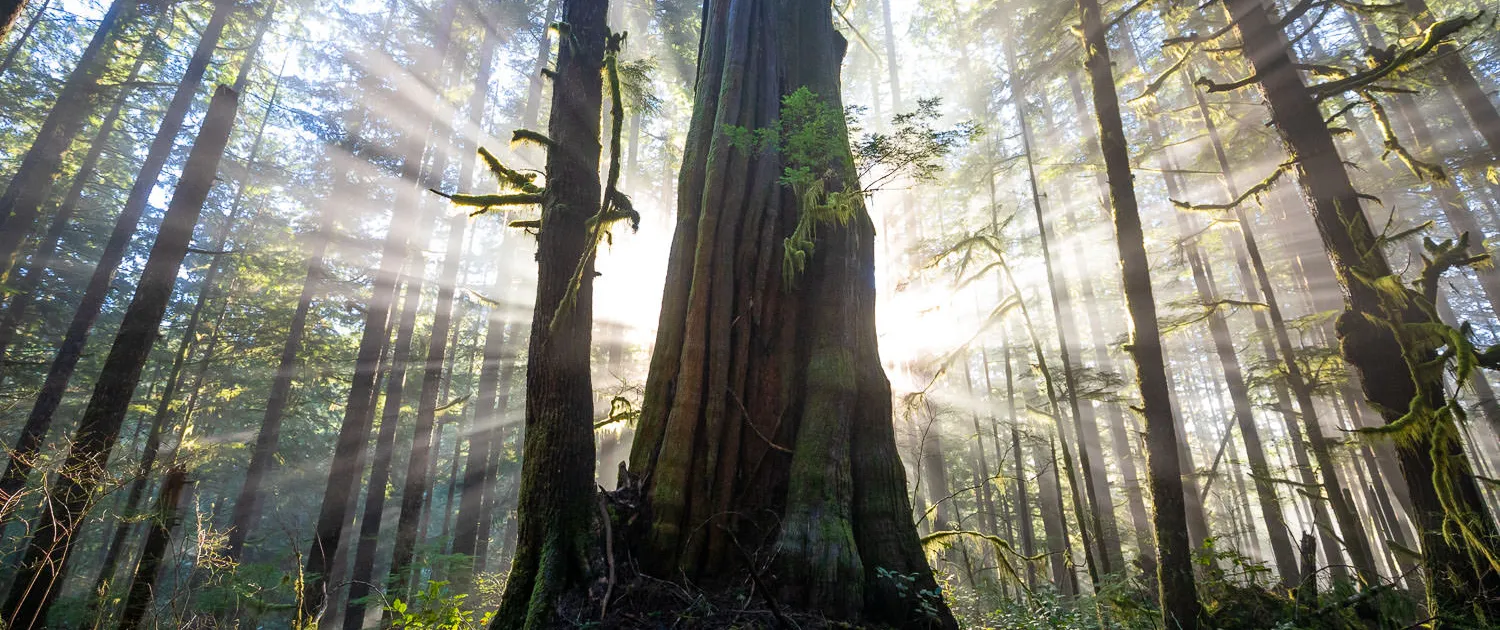 Jan 1 2018
Jan 1 2018Talking Points for Meetings with Members of the Legislative Assembly (MLAs)
Your MLA may or may not be well-informed on the need to protect endangered old-growth forests and to ensure sustainable second-growth forestry jobs. When meeting them, share your concerns, outline the basic information we’ve provided, and try to convince them to take a favourable stance if they haven’t already. You should also be prepared to discuss some key issues of concern your MLA is likely to point out. Below are some topics your MLA might bring up and how you can address them.
Topic 1: Protecting old-growth forests could have a negative effect on forestry jobs and the economy.
Response: Most of BC’s forests are now second-growth, with old-growth forests making up only a minority fraction of the land-base. If the BC government promoted policies, such as ending the export of raw, unprocessed logs to foreign mills and implementing tax breaks for new investments in machinery to process second-growth logs into lumber or higher-end, value-added products, the total number of forestry jobs in BC could be sustained and even increased while we quickly phase-out old-growth logging. We need to get more jobs out of every second-growth log that we cut, while protecting the last old-growth stands.
Topic 2: Protecting old-growth forests from logging must align with the interests and aspirations of BC’s First Nations communities.
Response: Because of the policies of the previous BC Liberal government, many BC First Nations communities now rely on old-growth logging in their traditional territories for some of their revenues and employment. Unfortunately, they also lack a range of alternative, sustainable economic opportunities that would allow them to sustain employment of band members and generate revenues if they were to protect the old-growth forests in their territories should they wish to. Therefore, the BC government should provide financial support for First Nations economic development and diversification – just like the previous government did in the Great Bear Rainforest – to support First Nations’ economic development in enterprises like eco- and cultural tourism, renewable energy development, and sustainable seafood harvesting, while protecting endangered old-growth forests.
Topic 3: Old-growth forests are not endangered. According to BC government statistics, 40% of BC’s forests are considered old-growth.
Response: Not all forests are the same – some are comprised of big trees, while others are comprised of small, stunted trees with little to no commercial value. However, the BC government’s old-growth statistics fail to distinguish between these different forest types. After a century of commercial logging, most of BC’s remaining old-growth forests are low-productivity forests growing on steep slopes with thin soils at high elevations or in water-saturated bogs where trees grow small and poorly. There is only a small fraction of original, moderate- to high-productivity old-growth forest left in BC – that which has moderate to high commercial value. These are the forests that are endangered.
According to Ministry of Forests data, 80% of the productive old-growth forests on BC’s southern coast have been logged, including well over 90% of the valley bottoms where the largest trees grow, while only about 8% of the productive forests are protected in parks and Old-Growth Management Areas.
Topic 4: The BC NDP government will protect forests by investing in wildfire resiliency and recovery, modernizing land use planning, and keeping more logs in BC for processing.
Response: These measures do not adequately address the urgent need to curtail and end the large-scale logging of old-growth forests. Most of BC’s original, productive old-growth forests have been logged and there is now very little left. We need bold, decisive action and major policy changes in order to protect what remains. We need a science-based, legislated plan to protect old-growth; funding for First Nations sustainable economic development; immediate action to protect old-growth hotspots; a ban on old-growth raw log exports; incentives and regulations to ensure a sustainable, value-added, second-growth forest industry; and finally, a land acquisition fund to purchase and protect old-growth forests on private land.
Topic 5: BC already has a system in place to protect old-growth forests in parks, Old-Growth Management Areas, and for species at risk like the Marbled Murrelet and Northern Goshawk. How is what you are proposing any different?
Response: BC’s existing system for protecting old-growth forests is not based on science and therefore protects a much smaller amount of old-growth than would otherwise occur. The current system does not mandate that the amount of old-growth to be protected, or “targets”, be based on any significant or comprehensive scientific assessments, does not distinguish between forest productivity classes (e.g. a stunted bog forest versus a monumental grove with giant trees) in those targets, and also allows the removal and “trade” of Old-Growth Management Areas (OGMAs) for logging purposes. In addition, these OGMAs, which once protected high productivity old-growth forests, are typically “traded” for lower productivity sites. The protection of more old-growth habitat for endangered species such as the Marbled Murrelet and Northern Goshawk, while greatly welcome and needed, will still result in most of the remaining endangered stands being logged if not accompanied by a comprehensive law to protect endangered old-growth forests, which themselves are only a small fraction of what once stood.





